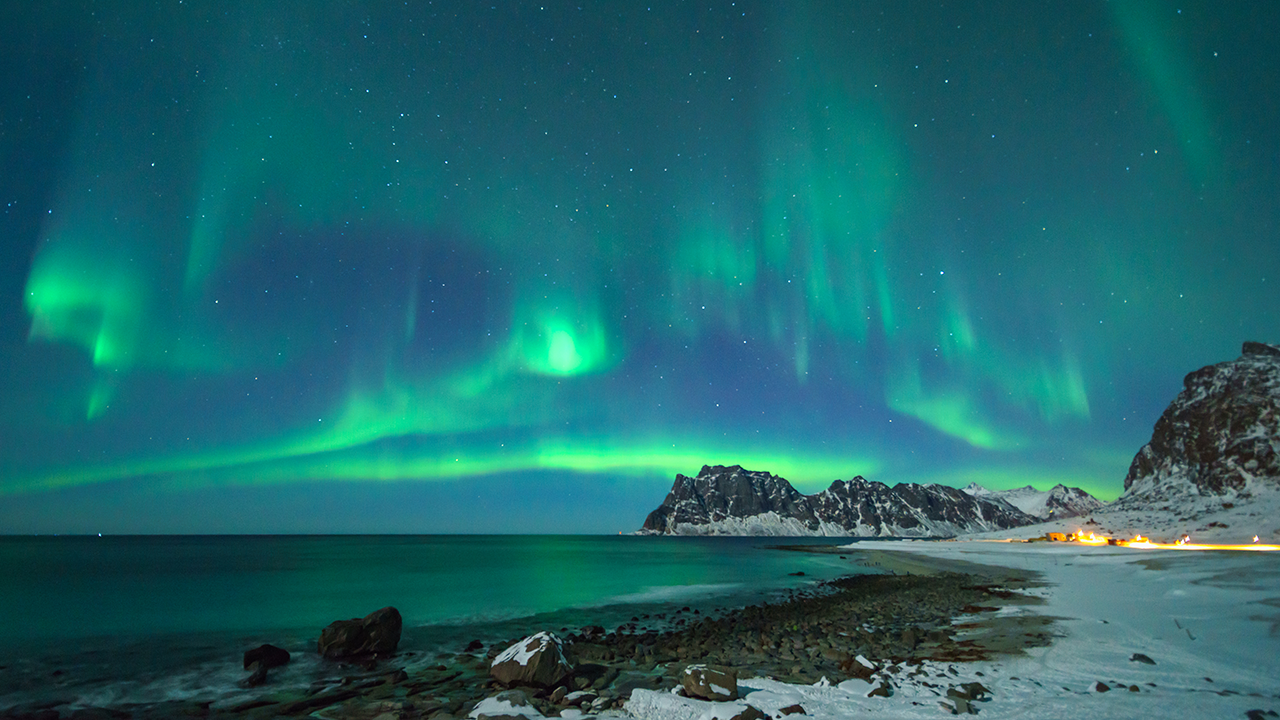
The world’s auroras spring from collisions between molecules of oxygen and nitrogen in the atmosphere and charged particles raining down from Earth’s protective space armor, known as the magnetosphere.
The magnetosphere is a bubble of space in which Earth’s magnetic field—not the sun’s—dominates. Many magnetospheric particles are electrons, the prime carriers of electricity in solid materials. The rain of electrons and other particles results from extreme events in the solar wind, a stream of energy and particles from the sun that blows onto the magnetosphere.
While the magnetosphere shields us from most of its effects, the solar wind can stretch Earth’s magnetic field lines. Eventually they snap back into place, releasing prodigious amounts of energy. This knocks loose some magnetospheric particles from their normal berths in near-Earth space and flings them down into the atmosphere like subatomic missiles, in “solar storms” that can damage satellites and wreak havoc on electrical grids, causing widespread power outages. These storms also produce spectacular auroras.
Understanding the genesis of solar storms will help in predicting them and preventing at least some of the damage. Now a team led by John Dombeck, a researcher in the University of Minnesota’s Minnesota Institute for Astrophysics, has taken a giant step toward solving the puzzle of how and under what conditions electrons are propelled into the atmosphere. In a study published in the Journal of Geophysical Research: Space Physics, they describe their discovery of a way to sort out the three mechanisms known to cause this phenomenon.
Rain from the Heavens
Like the Norse god Thor hurling thunderbolts, two mechanisms produce the speediest downward-moving electrons—and the brightest auroras, which light up the night sky with giant, eerily waving curtains of red and green light. One is intense bands of electric field far above the planet. The second is powerful waves in Earth’s magnetic field (Alfvén waves) that make the field lines undulate like a gigantic slinky. A third and more common mechanism is waves in the magnetic field that aren’t strong enough to accelerate electrons but can deflect them downward, causing a duller glow in the sky.
But it was nearly impossible to tell which mechanism was happening when, and under what conditions, because they all may operate at any time, including simultaneously.
Working with 13 years of data from NASA’s Fast Auroral Snapshot Explorer (FAST) satellite, the researchers found a way to classify the data so as to identify individual and multiple mechanisms, singly or simultaneously. Key to their success was that while other satellites detect downward-moving electrons, only FAST detects upwardly mobile electrons and only the first mechanism—electric field activity—can deflect those electrons back toward Earth. Also, when comparing their results to previous work, the team found that the mechanisms had often been misclassified.
“Understanding which mechanism is happening when will allow scientists to understand the energy input and the chemical reactions caused in Earth’s atmosphere,” Dombeck said. “Also, we’ll be better able to predict when extreme events might happen, which will help us protect satellites, communication, and power grids.”
Also on the team were Cynthia Cattell, professor of physics; recent U graduates Nitin Prasad and Even Meeker; U grad Elizabeth Hanson, now a UC Berkeley graduate student; and James McFadden, a UC Berkeley physics researcher.
Watch a video of the Southern Lights over the Great Australian Bight, as seen from space.